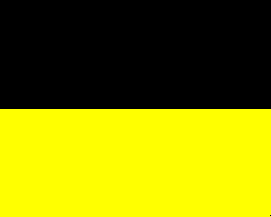Freiherr von Lovcenberg



August 1882 Promoted Leutnant in IR No. 14
November 1887 Joined the General Staff corps
May 1888 Promoted Oberleutnant
November 1890 Promoted Hauptmann
November 1896 Promoted Major
October 1897 Chief of staff for 34. Inf. Div. at Temesvár
May 1900 Promoed Oberstleutnant
September 1901 Cmd Landwehr IR No. 21
November 1903 Promoted Oberst
April 1904 Cmd Landwehr IR No. 1, Vienna
January 1910 Cmd 43. Landwehr Inf. Brigade
May 1910 Promoted Generalmajor
October 1912 Cmd 46. Landwehr Inf. Div.
May 1913 Promoted Feldmarschalleutnant,
June 1913 Cmd 1. Inf. Div.
March 1914 Cmd 18. Inf. Div.
FML Ignaz Freiherr von Trollmann started the war in control of the 18. Infantry Division. He managed this force until December 1914, when GM Eduard Böltz took over. Trollmann then assumed command of the Combined Corps from FML Alfred Krauss. He led it for a month before it was redesignated the new XIX. Corps in January 1915. He led this force for nearly three years, only surrendering it in October 1917 to GdI Ludwig Können-Horak. During this time, he was promoted to General der Infanterie. On 1 December 1918, Trollmann retired, and he settled down in Graz. Ignaz Freiherr Trollmann von Lovcenberg died on 23 February 1919.
GWS, 2/02 [rev. 3/05]
Immediately preceding the first invasion of Serbia
VI. Armee, General Potiorek
XVI. Korps, Feldzeugmeister Wenzel von Wurm
XVIII. inf .div., Feldmlt. Trollmann
Trollmann's division was supported on the right by the 67. infantry division of Feldmlt. R. Eisler and supported on the left by the 42. Honved infantry division of Feldmlt. von Sarkotic.
Immediately preceding the Battles for the Carpathians
III. Armee, Gen. d. Inf. Boroevic von Bojna
Puhallo Group:
XIX. Korps, Feldmlt. Trollmann
XXIX. inf. div., Feldmlt. Zanantoni
Trollmann's Corps was supported on the right by the V. Corps of Feldzeugmeister Paul Puhallo von Brlog and supported on the left by the Szurmay Group of Feldmlt. von Szurmay.
Immediately preceding the Dunajec offensive
II. Armee, Gen. d. Kav. Eduard von Böhm-Ermolli
XIX. Korps, Feldmlt. Trollmann
Chief of Staff, Oberst Günste
29. inf. div., Feldmlt. Zanantoni
57. inf. brig., Oberst Wöllner
58. inf. brig., Genmj. Poleschensky
7. field art. brig., Genmj. Soppe
34. inf. div., Genmj. Ritt. v. Birkenhain
67. inf. brig., Oberst Trojan
34. field art. brig., Obstlt. Köchert
Immediately following the summer campaign against Russia
II. Armee, Gen. d. Kav. von Böhm-Ermolli
XIX. Korps, Feldmlt. Trollmann
XXIX. inf. div., Genmj. Kroupa
Trollmann's division was supported on the right flank by the IV. Korps of Feldmlt. Schmidt von Georgenegg and supported on the left by the V. Korps of Feldmlt. Ferdinand Goglia.
Immediately preceding the autumn campaign against Serbia
III. Armee, Gen. d. Inf. Kövess von Kövesshaza
XIX. Korps, Feldmlt. Trollmann
LIII. inf. div., Genmj. von Pongracz
Trollmann's division was supported on the right flank by the Sorsic Group of Feldmlt. Sorsic and supported on the left by the XXII. German reserve Corps of Genmj. Falkenhayn.

Immediately following the defeat of Serbia and Montenegro
III. Army, Gen. d. Inf. Kövess von Kövesshaza
XIX. Korps, Feldmlt. Trollmann
Schieß brigade
Streith brigade
XLVII. inf. div., Feldmlt. von Weber
Support: LXII. inf. div., Feldmlt. von Kasler
At Koritsa, the Austrian and Bulgarian sectors met, and this juncture was incidentially also the point where the Italian lines met the French "Third Group" in the Salonika campaign. Trollmann's responsibility also covered the whole of Albania, which was as wild and lawless a land to police as any in the entire European theatre. Trollmann mainly policed the coastal towns in an effort to reduce Entente infiltration in this land, to watch over enemy ship movements, and to provide safety for vessels of the Quadruple Alliance.
To police the wild interior, Trollmann organised local militias from the ever feuding and heavily armed tribes. More Albanian militias march to and fro over the barren roads and paths of Albania than Austrian soldiers. Trollmann's biggest fortified point and centre of operations was the fortress of Scutari, in the northern part of the country. Here, troops from the Ottoman Empire held out against a Montenegrin and Serbian siege for many months during the First Balkan War, and Austria had threatened war against both countries after this to prevent its annexation by one or the other. Then, Scutari was the goal of a bizarre invasion of Albania by Serbia in the spring of 1915, after the latter had withstood three massive invasions by Austria. The exhausted Serbia was further weakened by the stiff resistance afforded by the enraged Albanian people, and Scutari was left partly destroyed when Serbia finally evacuated in late August 1915. Barely a month later, Serbia would be attacked for the final time by a determined enemy coalition, and the embarrassing scheme to seize Scutari and a permanent access to the sea under the cover of war was quickly forgotten. Scutari was also close to Montenegro, where Trollmann had literally made his name during the operation to capture famous Mount Lovcen and bring the Montenegrins to total defeat.
To help defend Scutari, Trollmann secured the allegiance of the Malissori, a Catholic tribe of Albanians who had first been supplied by King Nikola of Montenegro during their rebellion against the Ottomans in 1910 and 1911; they were later the focus of Serb brutality during the Balkan Wars and especially during the invasion of 1915. For this, Trollmann had no difficulty in securing them as police throughout Northern Albania.
GWS, 4/02
Immediately preceding the Bitolj offensive by the Serb army in exile
XIX. Korps, Feldmlt. Trollmann
XLVII. inf. div., Feldmlt. Braun
Scutari fort, Genmj. Dichtl
